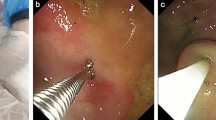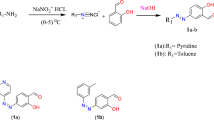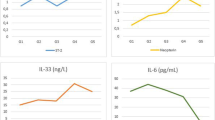Abstract
Portal hypertension (PHT) gastropathy is a frequent complication of liver cirrhosis and one of the leading causes of death from cirrhosis. Apoptosis is widely considered to be an active energy-dependent mode of cell death and a distinct entity from necrotic cell death. It is unclear whether gastric mucosal apoptosis is involved in PHT gastropathy. Prostaglandins (PGs) produced through cyclooxygenase (COX) are thought to play a key role in protection of the gastrointestinal mucosa from injury and apoptosis. However, the role of COX in PHT gastropathy is still not clearly understood. The aims of this study were to investigate whether (1) gastric mucosal apoptosis is involved in PHT gastropathy and (2) downregulation of COX contributes to this apoptosis. In this study, we show that gastric mucosal apoptosis was remarkably increased while mucosal proliferation was inhibited in PHT rats. Gastric mucosal COX-1 was significantly suppressed at both the mRNA and protein levels, and PGE2 was reduced in PHT rats. Further, PGE2 treatment suppressed gastric mucosal apoptosis in PHT rats. However, gastric mucosal COX-2 levels did not differ between sham-operated rats and PHT rats. Gastric mucosal levels of tumor necrosis factor-α (TNF-α) and Fas ligand, but not TNF-related apoptosis-inducing ligand, were increased, and activated caspase-8 and caspase-3 levels were upregulated in PHT rats. The release of cytochrome c from the mitochondria to the cytosol was not observed in PHT rats. Our data indicate that downregulation of COX-1 is involved in gastric mucosal apoptosis via death signaling-mediated type-I cell death in PHT rats.
Similar content being viewed by others
Log in or create a free account to read this content
Gain free access to this article, as well as selected content from this journal and more on nature.com
or
References
Kinjo N, Kawanaka H, Akahoshi T, et al. Significance of ERK nitration in portal hypertensive gastropathy and its therapeutic implications. Am J Physiol Gastrointest Liver Physiol 2008; 295:G1016–G1024.
Ichikawa Y, Tarnawski A, Sarfeh IJ, Ishikawa T, Shimada H . Distorted microangioarchitecture and impaired angiogenesis in gastric mucosa of portal hypertensive rats. Gastroenterology 1994; 106:702–708.
Ishikawa T, Sarfeh IJ, Tarnawski A, Golshan R, Douglas T, Sugiyama M . Epidermal growth factor protects portal hypertensive gastric mucosa in ischemia/reperfusion: the role of capillary endothelia and prostaglandins. Surgery 1992; 112:341–346.
Kawanaka H, Tomikawa M, Jones MK, et al. Portal hypertensive gastric mucosa has reduced activation of MAP kinase (ERK2) in response to alcohol injury: a key to impaired healing? FASEB J 2000; 15:574–576.
Pateron D, Tazi KA, Sogni P, et al. Role of aortic nitric oxide synthase 3 (eNOS) in the systemic vasodilation of portal hypertension. Gastroenterology 2000; 119:196–200.
Yokoyama Y, Baveja R, Sonin N, Clemens MG, Zhang JX . Hepatic neovascularization after partial portal vein ligation: novel mechanism of chronic regulation of blood flow. Am J Physiol Gastrointest Liver Physiol 2001; 280:G21–G31.
Yokoyama Y, Wawrzyniak A, Baveja R, Sonin N, Clemens MG, Zhang JX . Altered endothelin receptor expression in prehepatic portal hypertension predisposes the liver to microcirculatory dysfunction in rats. J Hepatol 2001; 35:29–36.
McCormack TT, Sims J, Eyre-Brook I, et al. Gastric lesions in portal hypertension: inflammatory gastritis or congestive gastropathy? Gut 1985; 26:1226–1232.
Arakawa T, Satoh H, Fukuda T, Nakamura H, Kobayashi K . Endogenous prostaglandin E2 in gastric mucosa of patients with alcoholic cirrhosis and portal hypertension. Gastroenterology 1987; 93:135–140.
Wallace JL . Prostaglandins, NSAIDs, and gastric mucosal protection: why doesn't the stomach digest itself? Physiol Rev 2008; 88:1547–1565.
Camara PR, Ferraz GJ, Franco-Penteado CF, et al. Ablation of primary afferent neurons by neonatal capsaicin treatment reduces the susceptibility of the portal hypertensive gastric mucosa to ethanol-induced injury in cirrhotic rats. Eur J Pharmacol 2008; 589:245–250.
Skill NJ, Theodorakis NG, Wang YN, Wu JM, Redmond EM, Sitzmann JV . Role of cyclooxygenase isoforms in prostacyclin biosynthesis and murine prehepatic portal hypertension. Am J Physiol Gastrointest Liver Physiol 2008; 295:G953–G964.
Beck PL, Lee SS, McKnight GW, Wallace JL . Characterization of spontaneous and ethanol-induced gastric damage in cirrhotic rats. Gastroenterology 1992; 103:1048–1055.
Payen JL, Cales P, Pienkowski P, et al. Weakness of mucosal barrier in portal hypertensive gastropathy of alcoholic cirrhosis. Effects of propranolol and enprostil. J Hepatol 1995; 23:689–696.
Chandrasekharan NV, Dai H, Roos KL, et al. COX-3, a cyclooxygenase-1 variant inhibited by acetaminophen and other analgesic/antipyretic drugs: cloning, structure, and expression. Proc Natl Acad Sci USA 2002; 99:13926–13931.
Kargman S, Charleson S, Cartwright M, et al. Characterization of Prostaglandin G/H Synthase 1 and 2 in rat, dog, monkey, and human gastrointestinal tracts. Gastroenterology 1996; 111:445–454.
Schwab JM, Beiter T, Linder JU, et al. COX-3--a virtual pain target in humans? FASEB J 2003; 17:2174–2175.
Chen NJ, Chio II, Lin WJ, et al. Beyond tumor necrosis factor receptor: TRADD signaling in toll-like receptors. Proc Natl Acad Sci USA 2008; 105:12429–12434.
Micheau O, Tschopp J . Induction of TNF receptor I-mediated apoptosis via two sequential signaling complexes. Cell 2003; 114:181–190.
Scaffidi C, Fulda S, Srinivasan A, et al. Two CD95 (APO-1/Fas) signaling pathways. EMBO J 1998; 17:1675–1687.
Walczak H, Miller RE, Ariail K, et al. Tumoricidal activity of tumor necrosis factor-related apoptosis-inducing ligand in vivo. Nat Med 1999; 5:157–163.
Moncada S, Higgs A . The L-arginine-nitric oxide pathway. N Engl J Med 1993; 329:2002–2012.
Kaviani A, Ohta M, Itani R, Sander F, Tarnawski AS, Sarfeh IJ . Tumor necrosis factor-alpha regulates inducible nitric oxide synthase gene expression in the portal hypertensive gastric mucosa of the rat. J Gastrointest Surg 1997; 1:371–376.
Munoz J, Albillos A, Perez-Paramo M, Rossi I, Alvarez-Mon M . Factors mediating the hemodynamic effects of tumor necrosis factor-alpha in portal hypertensive rats. Am J Physiol Gastrointest Liver Physiol 1999; 276:G687–G693.
Deviere J, Content J . Denys C, et al. Excessive in vitro bacterial lipopolysaccharide-induced production of monokines in cirrhosis. Hepatology 1990; 11:628–634.
Khoruts A, Stahnke L, McClain CJ, Logan G, Allen JI . Circulating tumor necrosis factor, interleukin-1 and interleukin-6 concentrations in chronic alcoholic patients. Hepatology 1991; 13:267–276.
Barnhart BC, Peter ME . The TNF receptor 1: a split personality complex. Cell 2003; 114:148–150.
Chaudhary PM, Eby M, Jasmin A, Bookwalter A, Murray J, Hood L . Death receptor 5, a new member of the TNFR family, and DR4 induce FADD-dependent apoptosis and activate the NF-kappaB pathway. Immunity 1997; 7:821–830.
Degli-Esposti MA, Smolak PJ, Walczak H, et al. Cloning and characterization of TRAIL-R3, a novel member of the emerging TRAIL receptor family. J Exp Med 1997; 186:1165–1170.
Emery JG, McDonnell P, Burke MB, et al. Osteoprotegerin is a receptor for the cytotoxic ligand TRAIL. J Biol Chem 1998; 273:14363–14367.
Mizoguchi E, Mizoguchi A, Takedatsu H, et al. Role of tumor necrosis factor receptor 2 (TNFR2) in colonic epithelial hyperplasia and chronic intestinal inflammation in mice. Gastroenterology 2002; 122:134–144.
Pan G, Ni J, Wei YF, Yu G, Gentz R, Dixit VM . An antagonist decoy receptor and a death domain-containing receptor for TRAIL. Science 1997; 277:815–818.
Pan G, O'Rourke K, Chinnaiyan AM, et al. The receptor for the cytotoxic ligand TRAIL. Science 1997; 276:111–113.
Schneider P, Thome M, Burns K, et al. TRAIL receptors 1 (DR4) and 2 (DR5) signal FADD-dependent apoptosis and activate NF-kappaB. Immunity 1997; 7:831–836.
Walczak H, Degli-Esposti MA, Johnson RS, et al. TRAIL-R2: a novel apoptosis-mediating receptor for TRAIL. EMBO J 1997; 16:5386–5397.
Wallach D, Varfolomeev EE, Malinin NL, Goltsev YV, Kovalenko AV, Boldin MP . Tumor necrosis factor receptor and Fas signaling mechanisms. Annu Rev Immunol 1999; 17:331–367.
Wu B, Qiu W, Wang P, et al. p53 independent induction of PUMA mediates intestinal apoptosis in response to ischaemia-reperfusion. Gut 2007; 56:645–654.
Wu B, Iwakiri R, Ootani A, Fujise T, Tsunada S, Fujimoto K . Platelet-activating factor promotes mucosal apoptosis via FasL-mediating caspase-9 active pathway in rat small intestine after ischemia-reperfusion. FASEB J 2003; 17:1156–1158.
Wu B, Ootani A, Iwakiri R, et al. Ischemic preconditioning attenuates ischemia-reperfusion-induced mucosal apoptosis by inhibiting mitochondria-dependent pathway in rat small intestine. Am J Physiol Gastrointest Liver Physiol 2004; 286:G580–G587.
Wu B, Iwakiri R, Tsunada S, et al. iNOS enhances rat intestinal apoptosis after ischemia-reperfusion. Free Radic Biol Med 2002; 33:649–658.
Fiorucci S, de Lima OM Jr, Mencarelli A, et al. Cyclooxygenase-2-derived lipoxin A4 increases gastric resistance to aspirin-induced damage. Gastroenterology 2002; 123:1598–1606.
Wallace JL, McKnight W, Reuter BK, Vergnolle N . NSAID-induced gastric damage in rats: requirement for inhibition of both cyclooxygenase 1 and 2. Gastroenterology 2000; 119:706–714.
Potenza MA, Botrugno OA, De Salvia MA, et al. Endothelial COX-1 and -2 differentially affect reactivity of MVB in portal hypertensive rats. Am J Physiol Gastrointest Liver Physiol 2002; 283:G587–G594.
Ou XW, Wang H, De Plaen IG, Rozenfeld RA, Hsueh W . Neuronal nitric oxide synthase (NOS) regulates the expression of inducible NOS in rat small intestine via modulation of nuclear factor kappa B. FASEB J 2001; 15:439–446.
Wu D, Wallen HD, Nunez G . Interaction and regulation of subcellular localization of CED-4 by CED-9. Science 1997; 275:1126–1129.
Yang J, Liu X, Bhalla K, et al. Prevention of apoptosis by Bcl-2: release of cytochrome c from mitochondria blocked. Science 1997; 275:1129–1132.
Acknowledgements
This work was supported by Grants-in-Aid from the One Hundred Talents Program of Sun Yat-Sen University in China 82000-3171310 (Wu B), and the Ministry of Education, Culture, Sports, Science, and Technology in Japan for Scientific Research 15590656 (Fujimoto K) and 14570478 (Iwakiri R).
Author information
Authors and Affiliations
Corresponding author
Rights and permissions
About this article
Cite this article
Wu, B., Zeng, L., Lin, Y. et al. Downregulation of cyclooxygenase-1 is involved in gastric mucosal apoptosis via death signaling in portal hypertensive rats. Cell Res 19, 1269–1278 (2009). https://doi.org/10.1038/cr.2009.97
Received:
Revised:
Accepted:
Published:
Issue date:
DOI: https://doi.org/10.1038/cr.2009.97
Keywords
This article is cited by
-
Fas/FasL mediates NF-κBp65/PUMA-modulated hepatocytes apoptosis via autophagy to drive liver fibrosis
Cell Death & Disease (2021)
-
IL-6-driven FasL promotes NF-κBp65/PUMA-mediated apoptosis in portal hypertensive gastropathy
Cell Death & Disease (2019)
-
PUMA mediates ER stress-induced apoptosis in portal hypertensive gastropathy
Cell Death & Disease (2014)



